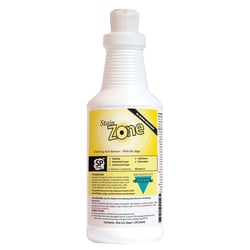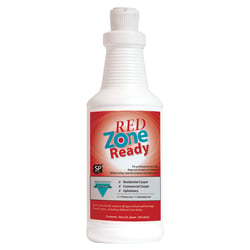One pizza company used the effective branding statement, “Better Ingredients Makes Better Pizza”. This statement holds true to making better cleaning solutions. Just like there are grades of cheese, pepperoni, sauce, etc., there are grades of raw materials used in making cleaning solutions.
The different grades of d’limonene are among the more obvious to the cleaner. Distillates, technical grade, and food grade are distinguished by the consistency of the fragrance. The odor of a poor distillate will not easily be forgotten.
The amount of the ingredient used in any formula matters. However, we need to go beyond the quality and amount of the ingredient and also find special ingredients with core performance features that improve cleaning results. It is important to properly select ingredients that highlight a core feature that creates unique cleaning solutions and provides consistent results.
Each blog in this series will focus on a different feature brought about by a distinctive raw material based on performance and not cost. We will show pictures and/or short videos that visually illustrate performance from adding this raw material that by itself is uniquely responsible for that aspect of the result. The art of the formulator is in the selection of these quality, innovative raws with features that produce reliable results for each application.
It starts and ends with the science of cleaning….
Stain Modification
Reducing agents generally work on synthetic dyes by taking away oxygen to make dye invisible. Oxidizing agents generally work on organic dyes by adding oxygen to make dye invisible. Typically, sodium metabisulfite (reducer) and hydrogen peroxide (oxidizer) is used in most industry formulas.
Reducers are generally activated with heat and the chemical reaction is completed quickly. Oxidizers are also activated by heat, but it is difficult to control the reaction and fibers can be readily bleached. UV lights can be used to accelerate the reaction, but if not monitored can also bleach fibers (I know this from personal experience). Most hydrogen peroxide formulas have some alkalinity built into them to speed up the reaction, but generally, significant dwell time is needed to complete the reaction.
There are times when both types of dyes are present in a stain. Usually, there are also surfactants added to reducing or oxidizing agents. Sometimes these surfactants are enough to release stain material from the fiber.
We sold a red surfactant-based stain remover about 20 years ago. It was used with a towel and an iron. The dyes would transfer to the towel. This product worked especially well on carpets with higher levels of protection and was a favorite for those who cleaned a lot of wool.
It also needs to be noted that polyester fibers do not stain, so as polyester carpets significantly grow in market share you will use fewer reducing and oxidizing agents.
The following video shows iodine in a beaker. Adding a little reducer agent immediately makes the color invisible. If you add more oxidizer then with enough time the color will become visible again. This is a great illustration to show how reducers and oxidizers work differently (the video is sped up to illustrate the reaction change over time)
My wife was a second-grade teacher, and I would visit her class each year and put on a chemical magic show. I would ask the class if I could remove the color of the iodine. They were skeptical for a short time as the color was removed quickly with a reducer. Then I asked if they believed that I could get it back. Now they were sure but had to wait for a few minutes for the color to return.
Education beyond blogs
Carpet Cleaning Technician Aramsco/ Interlink Supply Training Schedule (cvent.com) Upholstery and Fabric Technician
Featured Products
Bridgepoint Systems, Stain Remover, Red Zone Ready One-Part Red Stain Remover, 1 Quart

Bridgepoint Systems, Stain Remover, Stain Zone, Oxidizer, 1 Quart

